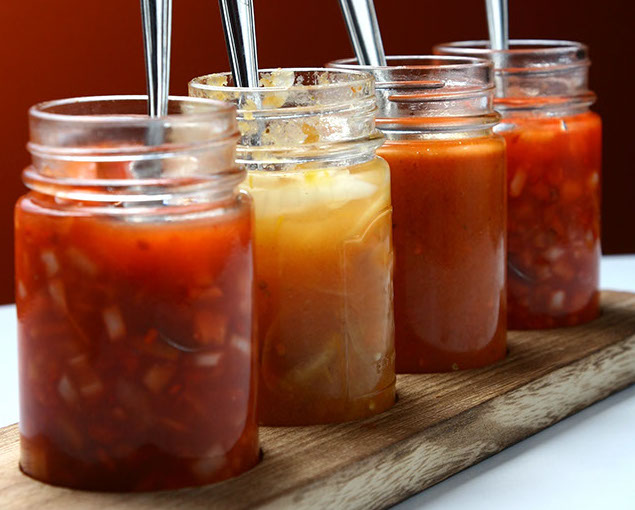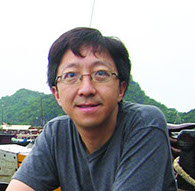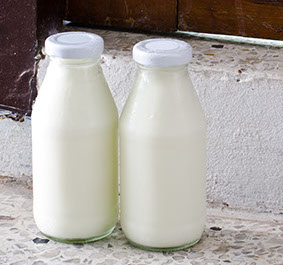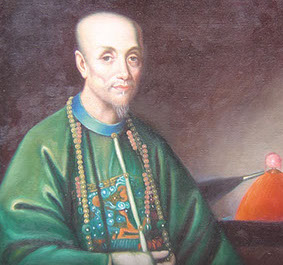A SAUCY TAKE ON HISTORY
What do Lee Kum Kee, Sriracha hot sauce and tea have in common? They are barometers of the fundamental changes that have swept through Hong Kong and China over the past two centuries.



![]() The availability of foodstuffs here versus across the border was one of the ways that we constructed our identity and I think it is worth investigating these food products and the recipes they inspired.
The availability of foodstuffs here versus across the border was one of the ways that we constructed our identity and I think it is worth investigating these food products and the recipes they inspired. ![]()
Dr John Wong
Dr John Wong has an unusual background for an historian. He spent more than a decade working in investment banking and hedge funds before deciding he wanted a more intellectually stimulating career – something that would help people see relevance in the past. What better topic to filter history through than food?
He has brought the business angle into this research, too, starting with his PhD at Harvard on Wu Bingjian (Houqua), who leveraged China’s geopolitical situation in the early 19th century to become the world’s foremost tea supplier. Houqua’s achievements challenged the notion that China was not engaged in international trade and finance at the time (see panel).
Now, Dr Wong is launching a project on bottled sauces and drinks, inspired by the way in which food in general is a distinguishing aspect of Hong Kong’s identity as a result of the Cold War divide and subsequent material prosperity compared to Mainland China.
“We could fly lobster in from Vancouver or abalone from Australia and develop Cantonese cuisine in a way that to this day would be considered quite distinct from what you see in Guangzhou,” he said. “The availability of foodstuffs here versus across the border was one of the ways that we constructed our identity and I think it is worth investigating these food products and the recipes they inspired.”
He is particularly interested in bottled products because their portability and long shelf life meant that ‘Hong Kong’ flavours could be packaged for local and overseas consumption. Lee Kum Kee, for example, has successfully produced and marketed sauces to Hong Kong and Chinese communities around the world.
“If you go to Toronto and lose your Filipina maid or Chinese amah, you can buy a bottle of Lee Kum Kee soy sauce chicken or curry chicken Hong Kong-style, put it in a pot, and produce that dish,” he said. “That situation reflects the configuration of Hong Kong families not just in the city, but beyond.”

Getting bottled milk from convenience stores tells a different story from having it delivered to your door.
Reflecting
the economic life of the city
Sauce companies also reflect the city’s economic development. The Amoy brand was started by a manufacturing company that later moved into property and was bought out by the French company Danone, then Ajinomoto of Japan.
“You can see how the company started with a certain sales proposition of modernity, food, taste, and then evolved into real estate and other aspects that would be different representations of the economic life of Hong Kong in the later decades.”
Dr Wong is also investigating Sriracha hot sauce, which has a Hong Kong connection because it was developed by Vietnamese boat people who reached the US via Hong Kong– making it truly a product of the Cold War.
Similar to sauces, bottled drinks from Vitasoy and Dairy Farm were more than ‘protein-in-a-bottle’ – their very consumption was a mirror of society.
“When I was a primary school student in Hong Kong, you could go to the canteen for a cold bottle of Vitasoy in the summer and a warm bottle in winter. That’s a different articulation of class compared to people who had bottled milk delivered to their doorsteps every morning from Dairy Farm. So the delivery process, the form you consumed it in, the price you paid, the different venues where you had it I think tell an interesting story of Hong Kong,” Dr Wong said.
Dr Wong said he hopes to uncover other examples that will deepen his understanding of Hong Kong-linked sauces and beverage companies, and their interplay with the city’s post-war development.

Tea master Houqua
As with sauces, the story of Houqua and tea is revealing of the times – in this case, early-19th-century China.
Houqua rose to prominence after the presence of continental Europeans in Canton waned due to conflict in Europe. England was left as the major buyer but Americans were starting to arrive. Houqua began to deal with the latter to counterbalance British hegemony and, in the process, built a fortune. Through his partners, he even invested abroad in such things as US railways.
Widely known as the most famous Hong merchant, Wu Bingjian, whom the Western traders called ‘Houqua’, made a fortune by trading with foreigners in the 19th century.
“We used to think the Chinese were unwilling participants in the world of international finance that was emerging in the 19th century, dragged onto the scene only with the opening of the treaty ports. Houqua’s story tells us otherwise,” Dr Wong said.
The wider background to his story also reveals interesting parallels between 19th-century Canton and 20th-century Hong Kong, he added. Both were sole ports of call for Westerners and both were changed as a result (Canton by the Opium Wars and treaty port status, Hong Kong by colonial administration and the 1997 change of sovereignty).

